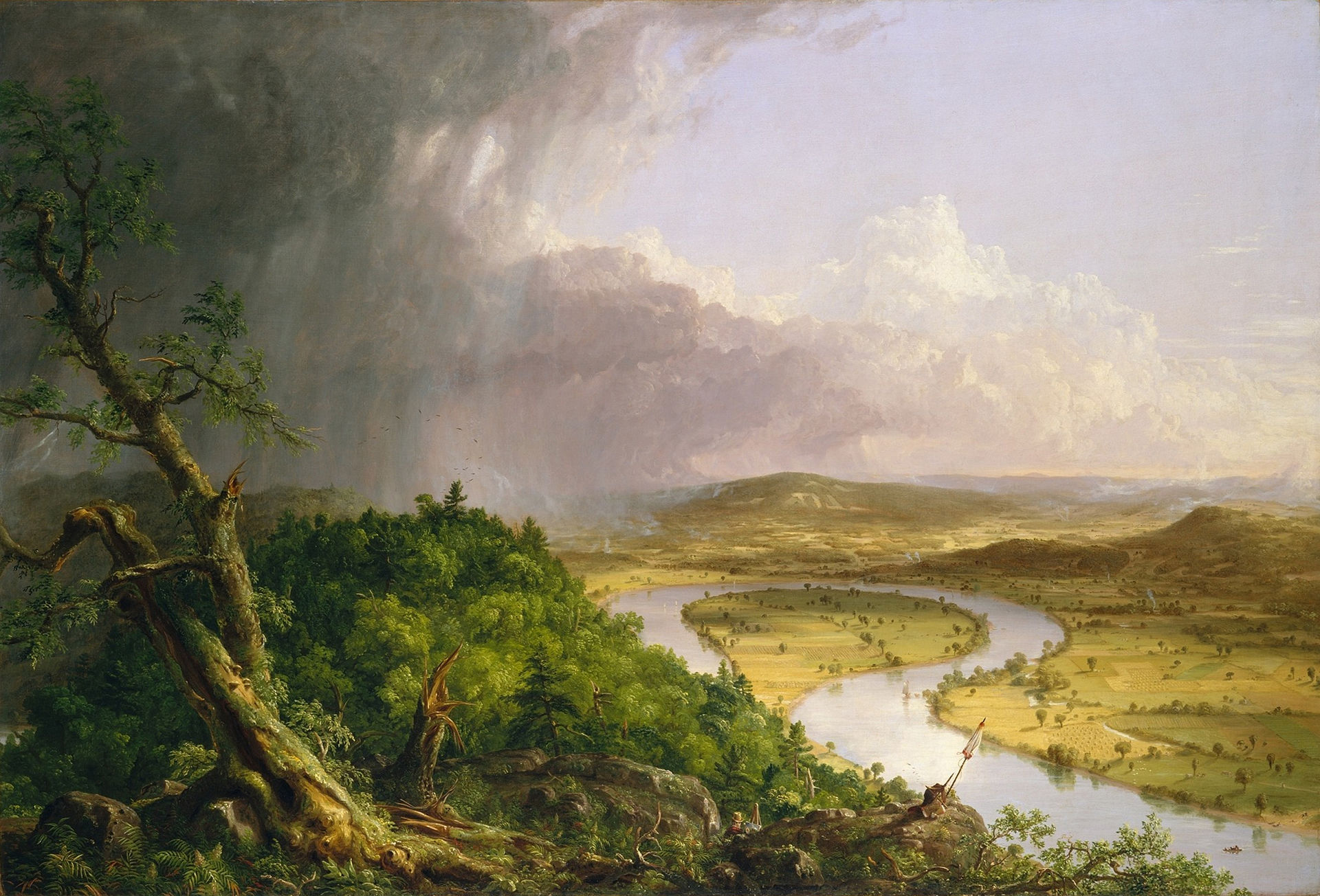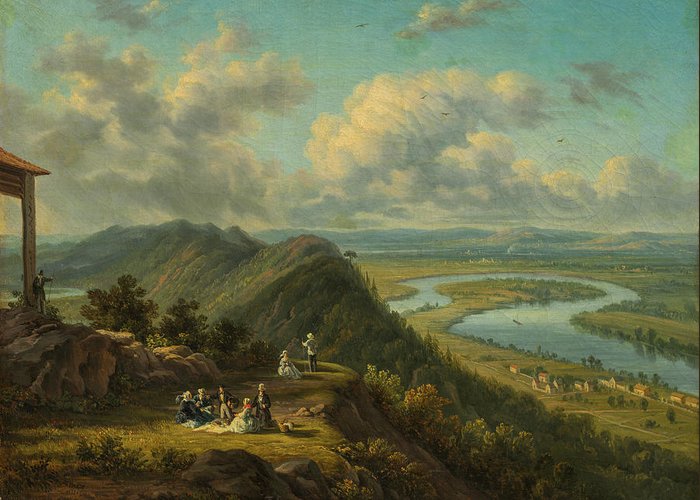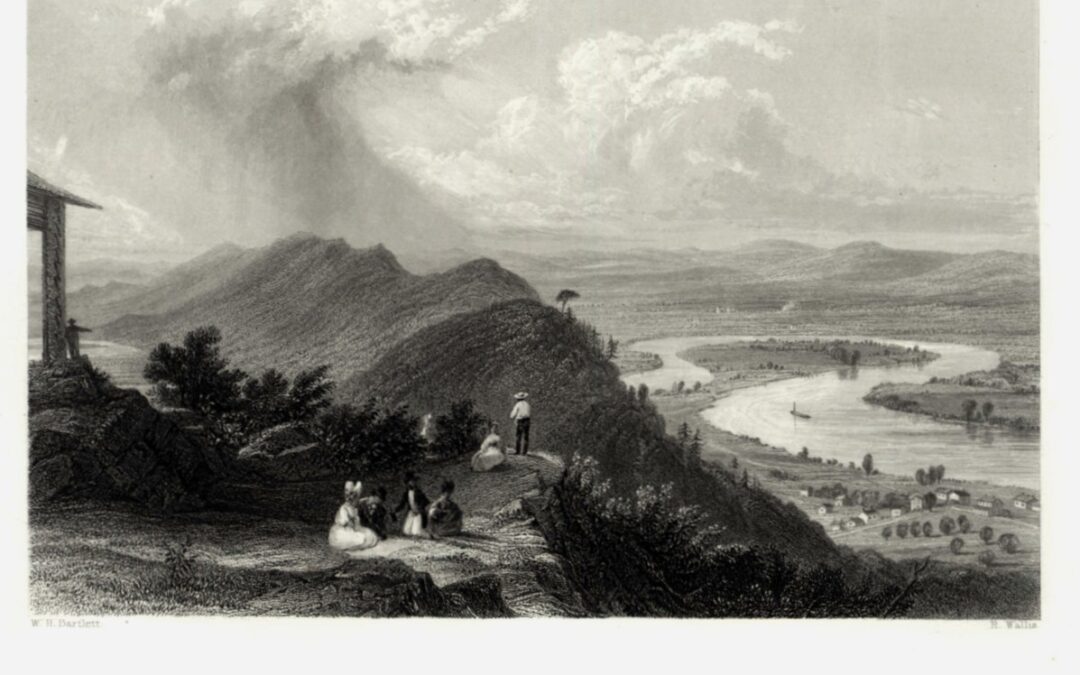Bartlett’s View from Mount Holyoke was accompanied by a text by Nathaniel P. Willis. The view is a topographical landscape, and Willis asserted that this was “Probably the richest view in America, in point of cultivation and fertile beauty.”
Unknown to Bartlett and Willis, Thomas had painted the Oxbow from Mount Holyoke in 1836. Exercising his artistic license and discontented with topographical fidelity, Cole’s subject is the clash of the wild and cultivated appearances characteristic of the American landscape. Discontented with topographical fidelity, Cole imagined the scene in romantic turmoil and stress. Cole charged the scene with significance by painting himself in the middle distance (look to the left of the umbrella) perched on a promontory painting the Oxbow.
Bartlett’s intent for American Scenery, however, required emphasis on the placid picturesque qualities of the scene. What is easily surmised is the easy access to the summit, the grassy plateau, and the shelter for shade and protection against rain—a nice place for a picnic.
 Victor de Grailly, a Frenchman who never visited the United States, painted Bartlett’s engraving around 1845. He kept the essential details but added food and drink to the picnic.
Victor de Grailly, a Frenchman who never visited the United States, painted Bartlett’s engraving around 1845. He kept the essential details but added food and drink to the picnic.
Bartlett was a British landscape artist known for illustrating picturesque travel volumes, most notably American Scenery: or Land, Lake, and River Illustrations of Transatlantic Nature.
Featured Image: View from Mount Holyoke
See American Scenery: or Land, Lake, and River Illustrations of Transatlantic Nature. London: George Virtue, 1839-140; Thomas Cole. View from Mount Holyoke, Northampton, Massachusetts, after a Thunderstorm– The Oxbow (1836). Metropolitan Museum of Art; Victor de Grailly. The Oxbow Seen from Mount Holyoke (1840c.). Cleveland Museum of Art

